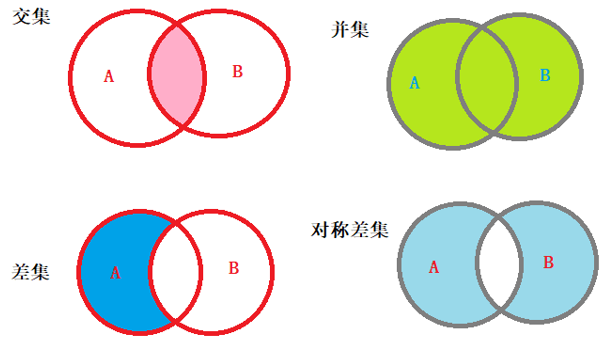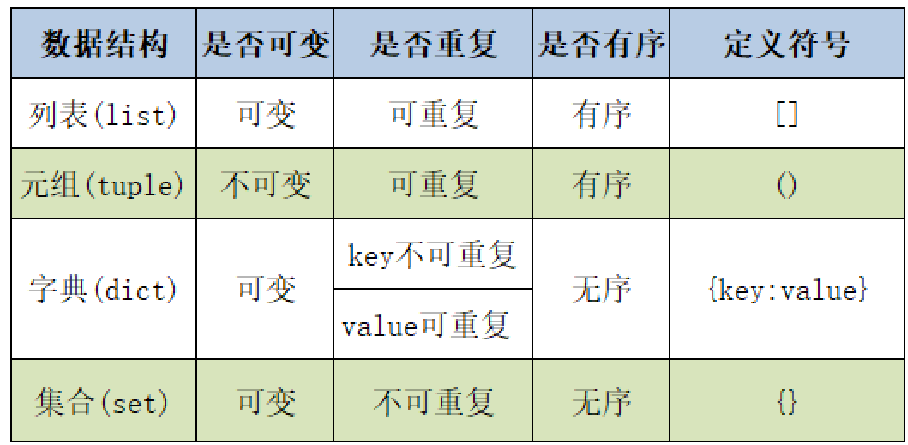1. Tuples
What is tuple
- Tuple: One of Python's built-in data structures is an immutable sequence
- Example:
t = ( 'python' , 'hello' , 90 )
- Variable and Invariant Sequences
- Invariant sequence: string, tuple
- No add, delete, change operations for immutable sequences
- Variable sequence: list, bullet, set
- Variable sequences can add, delete, and change sequences without changing object addresses
- Invariant sequence: string, tuple
- Why python designed tuples as immutable sequences
- In a multitask environment, there is no need to lock objects simultaneously; therefore, use immutable sequences whenever possible in your program
- Note: Tuples store references to objects
- If an object in a tuple is itself an immutable object, you cannot reference other objects
- If the object in the tuple is a mutable object, the reference to the mutable object is not allowed to change, but the data can change
- Diagrams and codes:

t = (10, [20, 30], 9) print(t[1], type(t[1]), id(t[1])) # [20, 30] <class 'list'> 2275937298112 """Try to t[1]Change to 100""" # t[1]=100 #Tuples do not allow modification of elements """Because t[1]=[20,30]List, A list is a variable sequence. So you can add elements to the list, The memory address of the list does not change""" t[1].append(100) # Add an element to the list print(t[1], id(t[1])) # [20, 30, 100] 2275937298112
How tuples are created
- Use parentheses, which can be omitted
t = ( 'python' , 'hello' , 90 ) t2='python','world',98 #Omit parentheses
- Using the built-in function tuple()
t1=tuple(('python','wof'))
- Tuples containing only one element need to be commas plus parentheses
t3=('python',)
Traversal of tuples
- Tuples are iterative objects, so you can traverse them using for-in
t=('python','world',98)
for item in t:
print(item)
2. Sets
What is a collection
- One of python's built-in data structures
- Like lists and dictionaries, mathematical variable sequences
- A collection is a dictionary without a Value
- Elements in a collection are out of order and do not allow duplication
How collections are created
- Create directly, using {}
- Using the built-in function set()
- Where defining an empty collection can only be set()
s6 = {} # dict dictionary type
print(type(s6)) # <class 'dict'>
s7 = set()
print(type(s7)) # <class 'set'>
Add, delete, check, change and so on to a collection
- Judgement of Collection Elements
- In and not in
- Addition of Collection Elements
- Call the add() method: add one element at a time
- Call the updata() method: add at least one element at a time
- Delete operation of collection
- Call the remove() method: only one element can be deleted at a time, and a KeyError exception is thrown if the specified element does not exist
- Call discard() method: Delete one specified element at a time, and do not throw an exception if the calling element does not exist
- Call the pop() method: delete one arbitrary element at a time, the method is parameterless
- Call the clear() method: empty all elements in the collection
Relation 1 Before Set
- Is two sets equal
- You can use the operator==or!=Make a judgment
- Is one set a subset of another
- The method issubset can be called for judgment
- Is one set a superset of another
- The method issuperset can be called for judgment
- Does Two Sets Intersect--Has Intersection Is False
- The method isdisjoin can be called for judgment
'''Whether two sets are equal (elements are the same, they are the same)'''
s = {10, 20, 30, 40}
s2 = {30, 40, 20, 10}
print(s == s2) # The elements in the True collection are out of order
print(s != s2) # False
"""Is one set a subset of another"""
s1 = {10, 20, 30, 40, 50, 60}
s2 = {10, 20, 30, 40}
s3 = {10, 20, 90}
print(s2.issubset(s1)) # True
print(s3.issubset(s2)) # False
'''Is one set a superset of another'''
print(s1.issuperset(s2)) # True
print(s2.issuperset(s1)) # False
'''Whether two sets contain intersections'''
print(s1.isdisjoint(s2)) # False with intersection
print(s2.isdisjoint(s3)) # False with intersection
Relationships between sets 2
- Sketch Map:

# Mathematical operation of sets
s1 = {10, 20, 30, 40}
s2 = {20, 30, 40, 50, 60}
# 1. Intersection operation, original set does not change
print(s1.intersection(s2)) # {40, 20, 30}
print(s1 & s2) # intersection() equivalent &
# 2. Union operation, original set does not change
print(s1.union(s2)) # {40, 10, 50, 20, 60, 30}
print(s1 | s2) # union() is equivalent to |
# 3. Differential set operation, original set does not change
print(s1.difference(s2)) # {10}, take the part not found in s2 in s1
print(s1 - s2)
# 4. Symmetric difference set, original set does not change
print(s1.symmetric_difference(s2)) # {50, 10, 60}, take the non-repeating parts from s1 and s2
print(s1 ^ s2)
Generative Forms of Sets
-
Formulas used to generate sets
{ i*i for i in range(1,10) }- Modifying {} to [] is list generation
- No tuple generation
# List Generation lst = [i * i for i in range(6)] print(lst) # [0, 1, 4, 9, 16, 25] # Collection Generation lst1 = {i * i for i in range(6)} print(lst1) # {0, 1, 4, 9, 16, 25}
3. Summary of lists, dictionaries, tuples and collections
